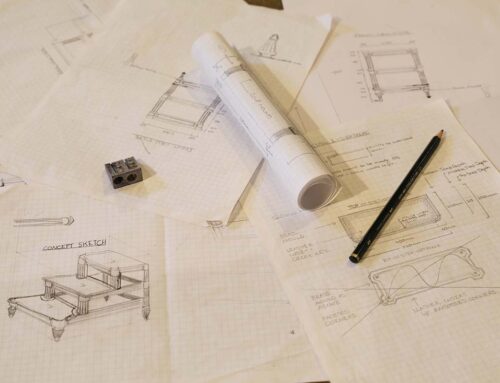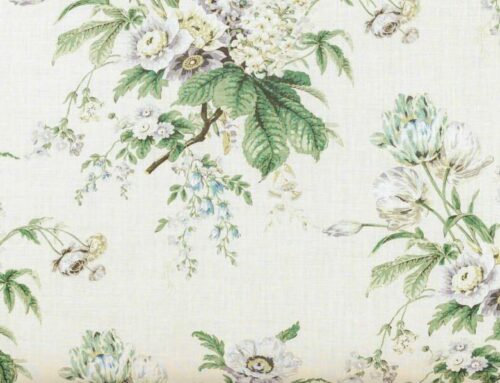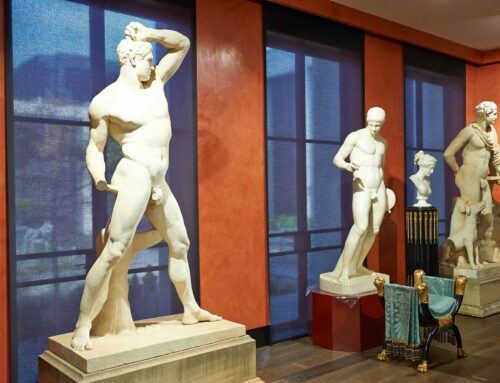Jessica Wallrock is the driving force behind Wallrocks and one of a new breed of antique dealers who are helping a younger generation of collectors fall in love with antiques. Last year, after a decade of acting as righthand-woman to her father Nick, Jessica took over at the helm. It was an important moment for the business and marketing and advertising graduate who had long dreamed of running her own business.
Here, she shares her passion for furniture and design and explains why she thinks the future is bright for the antiques business.
Did you always intend to work in the family business?
“No, not at all. My father started restoring and selling antique furniture in Brisbane over 40 years ago, and despite antiques being all around me when I was growing up, I didn’t take a huge amount of notice. My main career ambition was to work for myself – ideally, in an industry that allowed me to be creative. It wasn’t until after I finished my degree and returned to Brisbane after a period of travelling that I realised the path to achieving all of this was right in front of me.
“It was my husband that one day pointed out the beauty of the pieces in front of me, and it was as if I was seeing them for the first time – I realised what my parents had done was actually pretty cool – I had caught the bug. I’ve always had a passion for interior decorating so the idea of working in an industry that would allow me that creative outlet was incredibly appealing. The more I learned about antique furniture the greater my fascination with it became. I completed my interior design qualifications, then studied under Christie’s in London on an accelerated Fine Art, Curation and Design course under Aliki Braine.
“Last year, the timing felt right for me to take over the reins. Nick continues to work within the business and is still heavily involved in buying and restoring pieces, however I’m now responsible for the day-to-day running of the dealership and working to grow our domestic client base, which spans collectors from Brisbane, Sydney, Melbourne and even regional Australia.”
What do you enjoy most about working with antiques?
“This is a very exciting business to work in. The travel aspect of the job is amazing. As antique dealers, we tour Europe several times a year in search of new pieces and meet all kinds of eccentric personalities along the way – people who have been in the industry for over 40 years and have so much knowledge to impart and stories to share.
“Our clients are equally interesting and quirky and come from all walks of life. What really stands out working in the antiques business is that everyone I deal with is incredibly passionate about the subject: from the dealers to the restorers to the buyers themselves.
“There’s also a real sense of unpredictability about what we do which is, in itself, exciting. You never know what you’re going to find on your next buying trip and you’ve never seen everything – even if you think you have! And I love the thrill of buying a piece and then later discovering some hidden sign or mark which helps us uncover its origins and the story behind it.”
What do you think the future holds for the antique furniture business?
“I think the outlook for the antique industry is extremely exciting. There is a younger generation of buyers coming through who want quality, good design and beauty and for them, education is key. It’s important for us as dealers to educate buyers on the quality and benefits of choosing antique furniture and inspire them by demonstrating how antiques can work in different contexts and interiors.
“We’re seeing an appetite for this with some clients asking us to host dinners where we discuss the merits of different pieces. In the future I’m keen to run educational events where we teach clients about the hallmarks of various pieces and how to style them.
“Another important factor is the growing awareness among consumers of ethically-sourced, environmentally- sustainable goods. There is no product more sustainable than antiques, which have been recycled and reused for centuries and have little to no carbon footprint. This, coupled with an increasing population and finite product which is no longer being produced, can only increase the demand for antiques in the future.”
Are there any particular antique furniture periods you appreciate?
“I’m particularly fond of English Regency, Louis XVI and French Empire furniture. All are similarly aligned in terms of the period they were made and the motifs used. While all are incredibly different, they work extremely well together.”
Finally, how would you describe your own interior design aesthetic?
“I’m not big on trends. They are too fleeting and I don’t like the idea of doing something everyone else is doing – it’s not what we’re about. I prefer to design in a more classic style, but with a modern twist. When it comes to designing for clients, I prefer to interpret what they want and guide them through ensuring that works, rather than what I think they should have.”






